The New Motorola Moto X (2nd Gen) Review
by Joshua Ho on September 17, 2014 9:00 AM EST- Posted in
- Smartphones
- Motorola
- Android
- Mobile
GPU Performance
As said in the previous section, we'll look at game-based benchmarks to get a better idea of how the Snapdragon 801's Adreno 330 GPU performs.
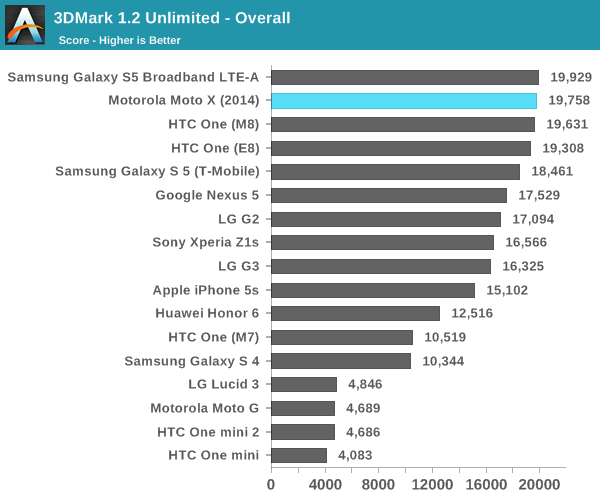
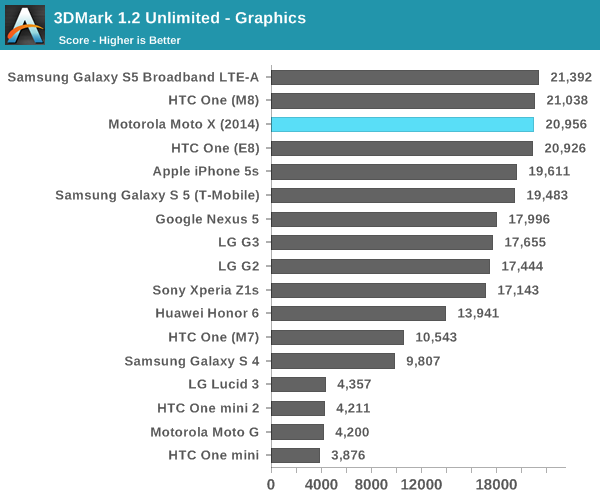
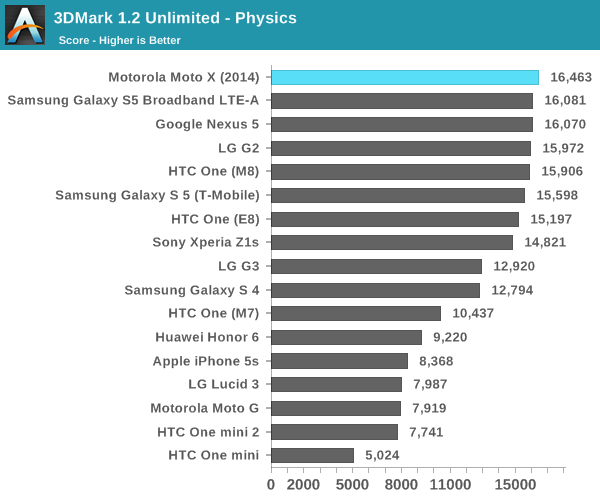
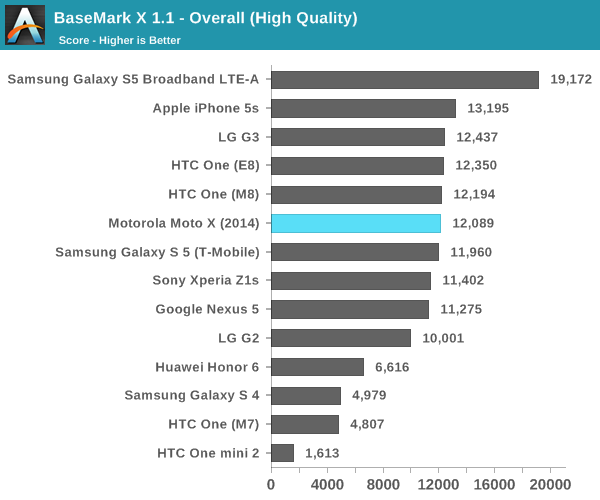
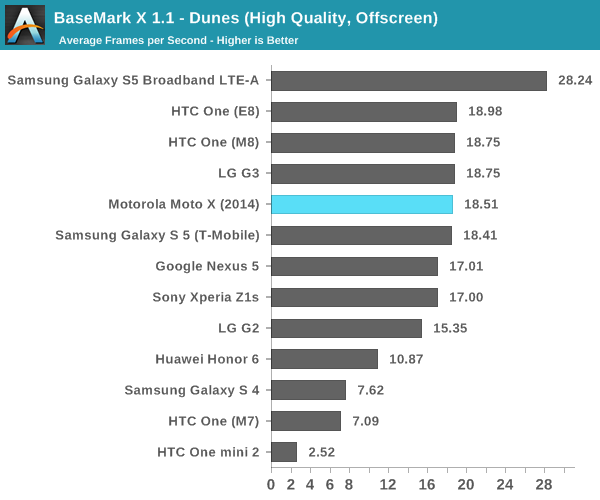
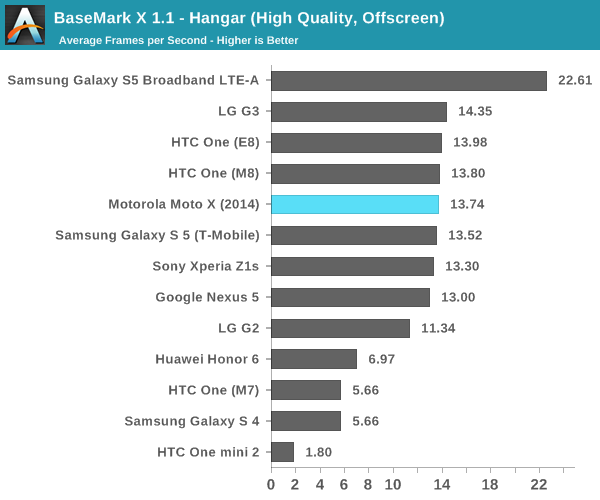
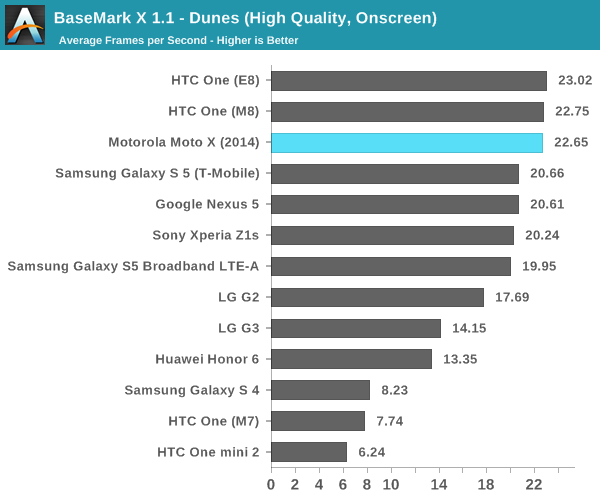
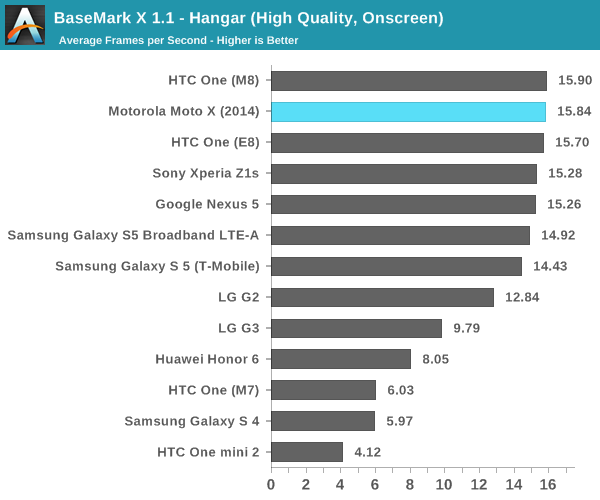
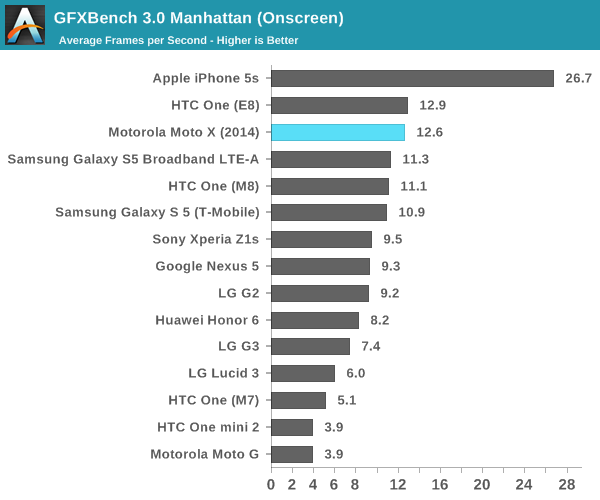
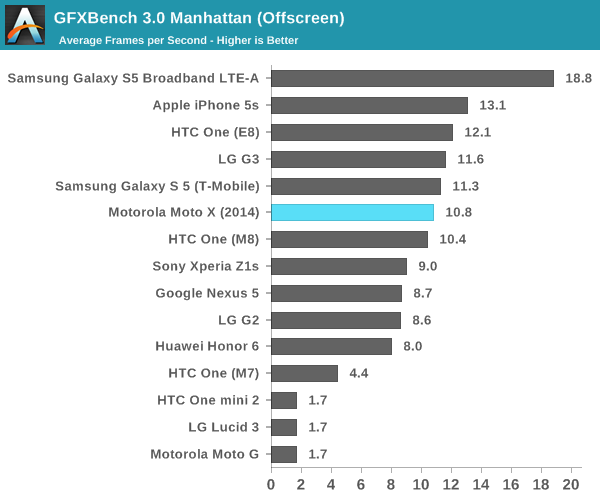
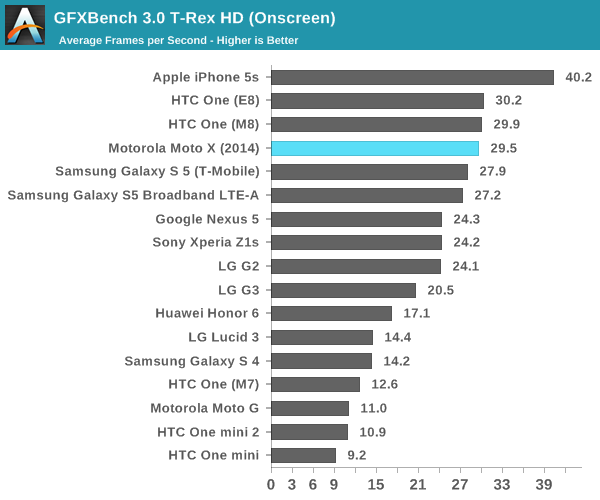

Once again, there are really no results that stand out. I suspect that the metal frame helps to prevent thermal throttling in short benchmarks, but in most scenarios this doesn't really play out and there's no real way to establish long term performance as the GFXBench rundown test doesn't complete properly.
NAND Performance
NAND performance has been an ongoing issue since we first illustrated how poor NAND could easily become a massive detriment to user experience. While sequential reads and writes are generally at a good level these days, it’s the random read and write tests that can be incredibly poor, and these are often a good indicator of overall UI performance as something like installing applications can make a device unusable if storage performance isn’t good enough. In order to test this, we turn to Androbench with a few custom settings to best represent performance.
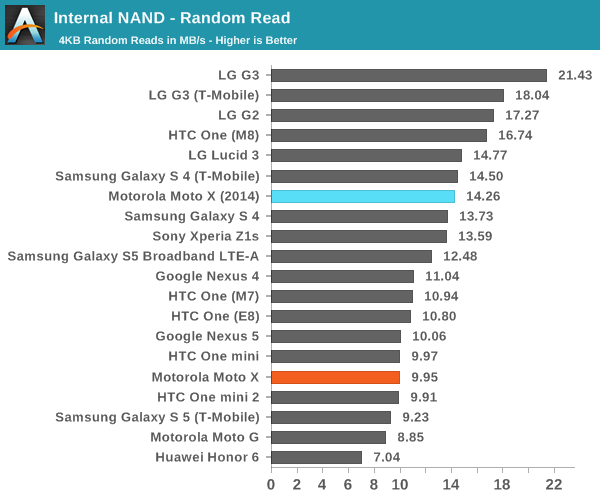
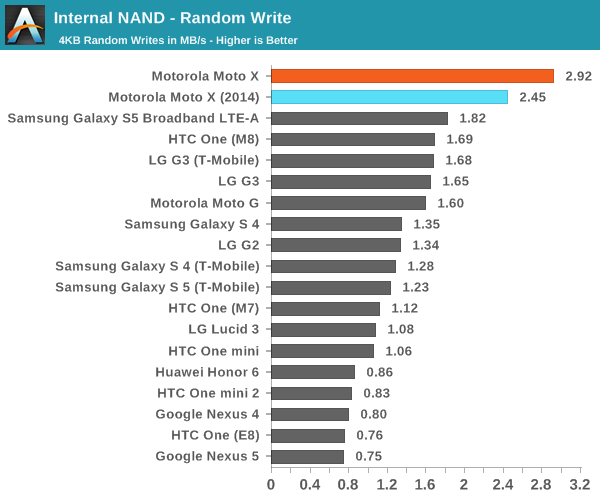
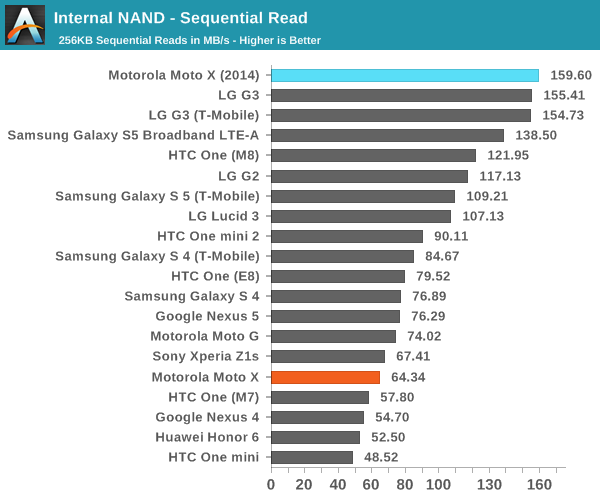

While the new Moto X doesn't quite top the previous Moto X in random write speeds, it's unlikely that the storage solution is worse. I found that the data and system partitions now use ext4, which means that the performance gains we saw with f2fs are gone. I'm not sure why Motorola decided to change back to ext4 given the performance gains that come with f2fs, but possible reasons include unforeseen conditions where f2fs could result in data loss compared to ext4 or difficulties in integrating f2fs support on Android. At any rate, the new Moto X is one of the best performers in this category, which should keep performance high after a year or two of use.










179 Comments
View All Comments
bigboxes - Wednesday, September 17, 2014 - link
For the most part I would agree that measurements should be given in inches. However, almost all manufacturing is done in metric and if I needed otherwise I would just use a conversion app on my smartphone. And for all the hater comments I'll await your cries the very next article that posts specs in inches. I know there are some foreign readers, but this is an American website so don't get too distraught when that happens. You can use that very same conversion app to convert inches to metric.Peroxyde - Wednesday, September 17, 2014 - link
I always respect AT audience as knowledgeable people. But this is the exception. Trust me on this one sir, the metric system is far superior. If you don't get it, this means there are some implications you are not aware of. This could be you are not strong in maths or science? Here is a simple test, do you know by heart each increment of the wrenches or drill bits sizes when measure in inches? With metric it goes by 1, 2, 3, ... even a 3 years old kid can know it without learning.nivedita - Wednesday, September 17, 2014 - link
Um, the US makes drill bits in fractions of an inch. You sound like a 3 yr old who just learned how to count yourself, you know.soccerballtux - Thursday, September 18, 2014 - link
inches will always be superior for size estimation. it's impossible to visualize how many centimeters a phone is by looking at it, because the count always exceeds 5. Inches, eh about 5, maybe 6. What, 13 centimeters? how am I supposed to visually divide the phone into 15 rows like I do with 5 inches? Just doesn't work, and won't ever. I, for one, think our socialist commie europeans can suck a fat 5" one.Peroxyde - Thursday, September 18, 2014 - link
Oh please, you don't know what you are talking about. You are blissfully happy to know that 1GB = 1000 MB, and you would scream in despair if you were told that a smartphone capacity has a 3/8 Giga inch bytes. When you start doing engineering calculation using feet, inch and pound you will understand what I meant.soccerballtux - Saturday, September 20, 2014 - link
I prefer mils myselftechxx - Wednesday, September 17, 2014 - link
I still think Motorola made the mistake of not realizing that the market wanted a BETTER Moto X, not a BIGGER one. If they had kept it at 4.7" and used a high quality display at 720p, we would have a very unique and incredible ergonomic phone that is high-spec'd with awesome battery life. My fingers are still crossed for a Moto X Compact that can deliver this because as of right now the Sony Xperia Z3 Compact is the true successor to the Moto X IMO.semo - Wednesday, September 17, 2014 - link
Or at the very least, they should have kept the Moto G the same size or bumped it to no further than 4.7". I think this is the only high end phone that doesn't have a SD slot. A removable battery is also a must as batteries are considered consumables. Like selling printers with sealed ink/toner cartridges. Madness!chrone - Wednesday, September 17, 2014 - link
+1. We want high performance 4.7" device.flyingpants1 - Wednesday, September 17, 2014 - link
It's called the Samsung Galaxy Alpha.